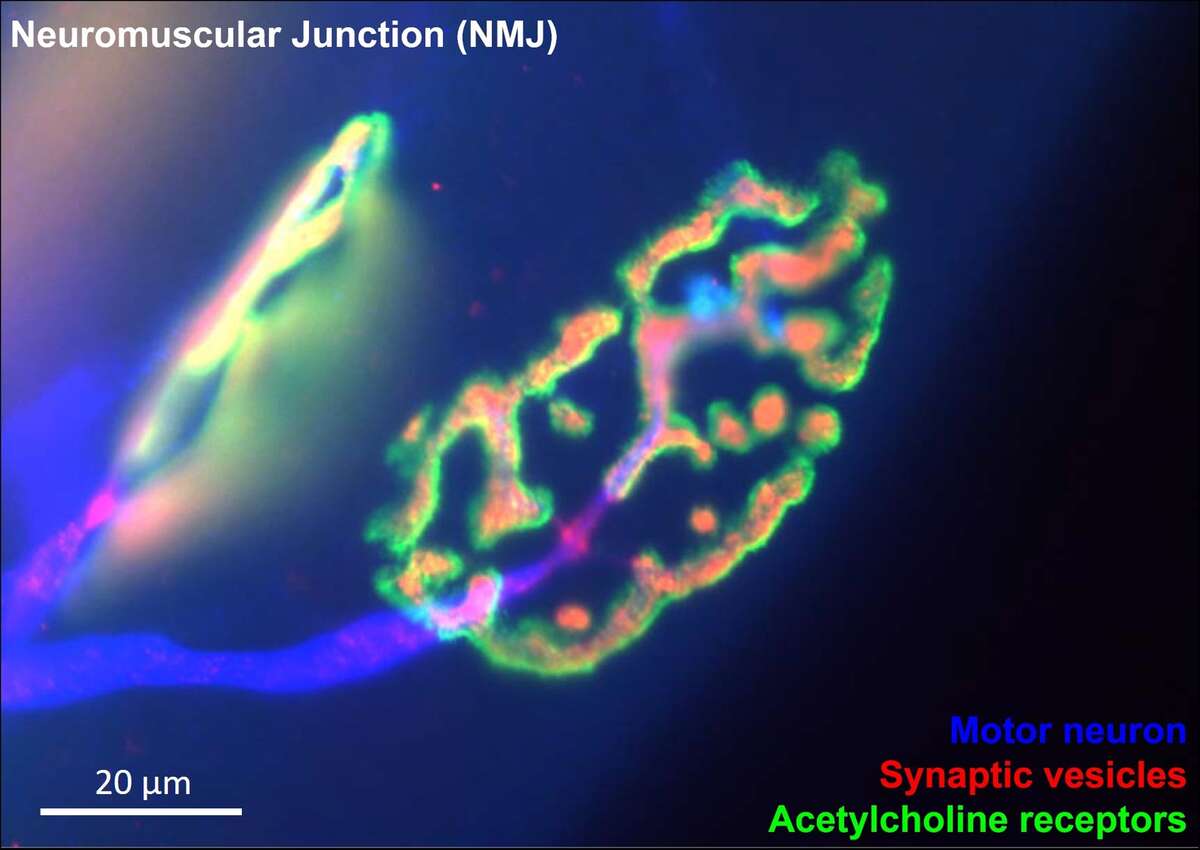NMJ maintenance and remodeling
The neuromuscular junction (NMJ) is a chemical synapse that transmits motor neuron action potentials into muscle fiber action potentials (see Figure below). Without this connection, muscle fibers cannot contract and quickly wither away. The molecular mechanisms that orchestrate the formation of the NMJ have been a subject of investigation in the laboratory over many years and are now well understood (Tintignac et al., 2015).
A mature NMJ relies on pre-, post- and extra-synaptic signals to maintain its stability. As a result, NMJs are susceptible to damaging stimuli from multiple sources. Maintenance of the NMJ is of utmost importance. Genetic and sporadic diseases that destabilize the NMJ cause strong neuromuscular symptoms. Similarly, NMJ de-stabilization is a hallmark of muscle aging. Multiple events, including motor neuron loss, muscle fiber breakdown, chronic inflammation and defects in the cells responsible for producing the extracellular scaffolding that supports it may affect NMJ stability in aging muscle.
However, NMJs are far from sitting ducks in aging skeletal muscle; actively fighting to restore and maintain their integrity. For example, when a muscle fiber loses its connection to the motor neuron it rapidly activates a strong transcriptional response, akin to a child screaming when separated from a parent. This ‘denervation response’ is thought to alert nearby axons, which sprout and try to restore contact with the muscle fiber. The compensatory reinnervation of denervated muscle fibers forms a frontline defense against both age-related muscle loss and motor neuron diseases. In sarcopenic muscle, compensatory reinnervation begins to fail, leading to muscle fiber loss and weakness. Recent work from our laboratory implicates aberrant mTORC1 signaling as a key impediment of NMJ stability following denervation (Castets et al., 2019). In mice where mTORC1 is constantly activated in skeletal muscle fibers (also a feature of sarcopenic muscle), the denervation response of muscle fibers is blocked. As a result, NMJs rapidly disintegrate.
Using whole-mount 3D imaging techniques, genetically modified mouse models and in vivo gene targeting by CRISPR/Cas9, we are testing candidates important for NMJ stability and remodeling.
Funding:
SNSF
Swiss Life



